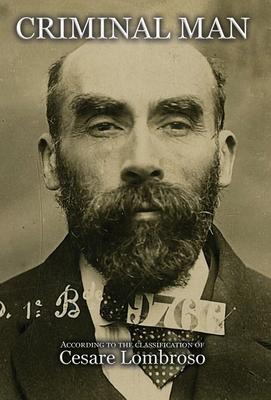Written while Lombroso was professor of forensic medicine at the University of Turin, L'Uomo delinquente (Criminal Man) set out to conduct an anthropological study of its subject. The premise was that the criminal is born and could be identified from congenital traits. By learning to recognise them, and by developing a detailed system of classification, the aim was better to understand the criminal so as to optimise prevention, reform, or containment. The author leaves no stone unturned, examining every type and level of criminal, recording every measurable characteristic, be it physical, physiological, or psychological. Although subsequently subject to criticism, and now long deprecated, the work was enormously influential in the late 19th and early 20th centuries, as both a pioneering and sincere effort to understand the origins and sources of crime. The work went through five Italian editions, in which Lombroso continued to expand and refine his theory. However, because of its length, it was difficult to get the book translated, so no English edition existed until after the author's death. First published in 1911, the present text is a summary prepared for the Anglo-American market by his daughter, Gina, while her father still lived, and it is in this form that it became known in the English speaking world. Its influence would be felt throughout Europe and America, and would transcend criminology to find references in literature. The likes of mile Zola, Leo Tolstoy, Joseph Conrad, and Bram Stoker, the later in his descriptions of the vampire in Dracula, drew from Lombroso's work on criminal man.

Criminal Man, According to the Classification of Cesare Lombroso
Written while Lombroso was professor of forensic medicine at the University of Turin, L'Uomo delinquente (Criminal Man) set out to conduct an anthropological study of its subject. The premise was that the criminal is born and could be identified from congenital traits. By learning to recognise them, and by developing a detailed system of classification, the aim was better to understand the criminal so as to optimise prevention, reform, or containment. The author leaves no stone unturned, examining every type and level of criminal, recording every measurable characteristic, be it physical, physiological, or psychological. Although subsequently subject to criticism, and now long deprecated, the work was enormously influential in the late 19th and early 20th centuries, as both a pioneering and sincere effort to understand the origins and sources of crime. The work went through five Italian editions, in which Lombroso continued to expand and refine his theory. However, because of its length, it was difficult to get the book translated, so no English edition existed until after the author's death. First published in 1911, the present text is a summary prepared for the Anglo-American market by his daughter, Gina, while her father still lived, and it is in this form that it became known in the English speaking world. Its influence would be felt throughout Europe and America, and would transcend criminology to find references in literature. The likes of mile Zola, Leo Tolstoy, Joseph Conrad, and Bram Stoker, the later in his descriptions of the vampire in Dracula, drew from Lombroso's work on criminal man.